Partitions Numériques18
Matériel de Musique34
STUDIO |
SONO |
LUMIERE |
DEEJAY |
MICROPHONE |
MARQUES |
GUITARE |
CLAVIER |
PERCUSSION |
CUIVRE / VENT
|
NOËL
|
CORDES/TRAD.
|
R.AVANCÉE
18 partitions trouvées


 Largo (from "Symphony No. 9") ("From the New World") (Db) (Saxophone Quintet - 2 Alto, 2 Tenor, 1 Ba #Quintette de Saxophone: 5 saxophones #INTERMÉDIAIRE #Classique #Musique Sacrée #Antonin Dvorak #Regis Bookshar #Largo #Regis Bookshar #SheetMusicPlus
Largo (from "Symphony No. 9") ("From the New World") (Db) (Saxophone Quintet - 2 Alto, 2 Tenor, 1 Ba #Quintette de Saxophone: 5 saxophones #INTERMÉDIAIRE #Classique #Musique Sacrée #Antonin Dvorak #Regis Bookshar #Largo #Regis Bookshar #SheetMusicPlus


 Largo (from "Symphony No. 9") ("From the New World") (Db) (Tenor Saxophone Quintet) #Quintette de Saxophone: 5 saxophones #INTERMÉDIAIRE #Classique #Musique Sacrée #Antonin Dvorak #Regis Bookshar #Largo #Regis Bookshar #SheetMusicPlus
Largo (from "Symphony No. 9") ("From the New World") (Db) (Tenor Saxophone Quintet) #Quintette de Saxophone: 5 saxophones #INTERMÉDIAIRE #Classique #Musique Sacrée #Antonin Dvorak #Regis Bookshar #Largo #Regis Bookshar #SheetMusicPlus


 Largo (from "Symphony No. 9") ("From the New World") (Db) (Alto Saxophone Quintet) #Quintette de Saxophone: 5 saxophones #INTERMÉDIAIRE #Classique #Musique Sacrée #Antonin Dvorak #Regis Bookshar #Largo #Regis Bookshar #SheetMusicPlus
Largo (from "Symphony No. 9") ("From the New World") (Db) (Alto Saxophone Quintet) #Quintette de Saxophone: 5 saxophones #INTERMÉDIAIRE #Classique #Musique Sacrée #Antonin Dvorak #Regis Bookshar #Largo #Regis Bookshar #SheetMusicPlus
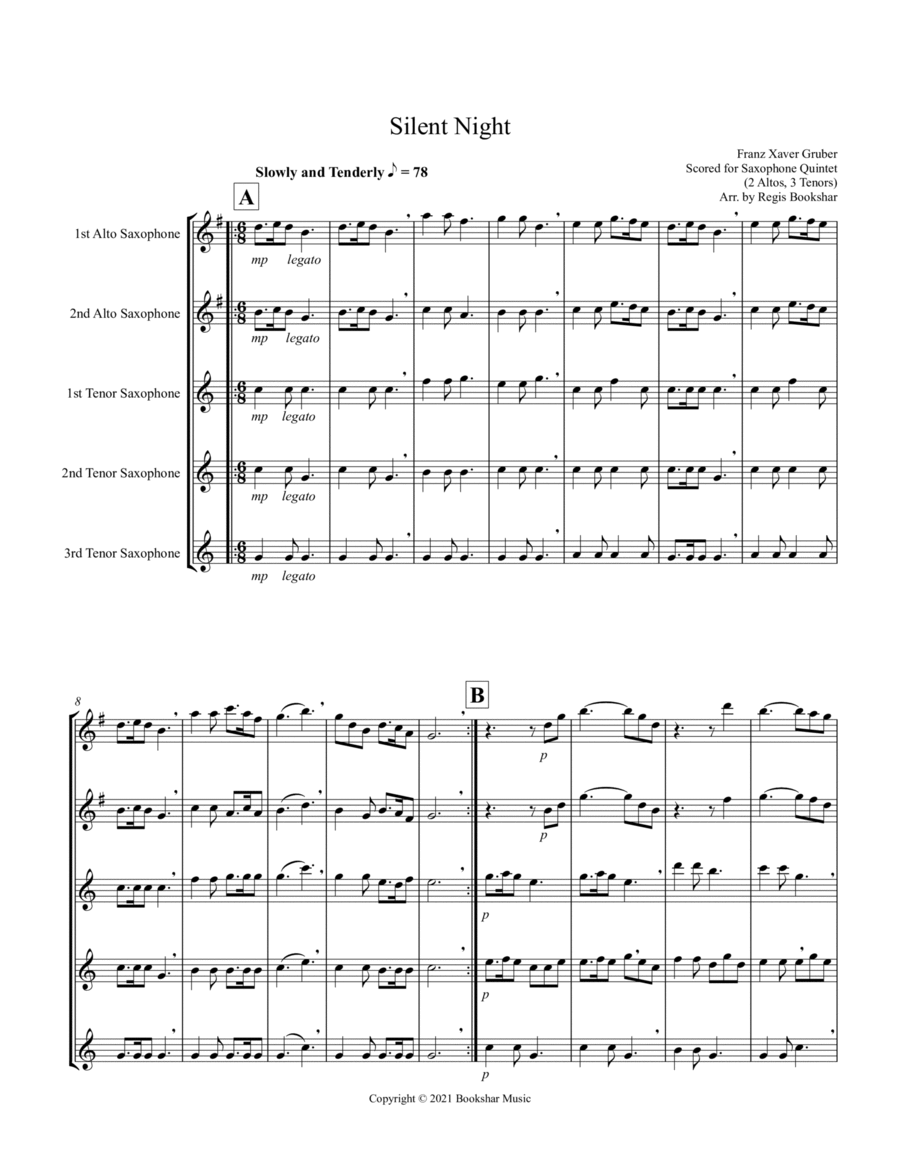

 Silent Night (Bb) (Saxophone Quintet - 2 Alto, 3 Tenor) #Quintette de Saxophone: 5 saxophones #INTERMÉDIAIRE #Noël #the 1840's, the song was well #Franz Xaver Gruber #Regis Bookshar #Silent Night #Regis Bookshar #SheetMusicPlus
Silent Night (Bb) (Saxophone Quintet - 2 Alto, 3 Tenor) #Quintette de Saxophone: 5 saxophones #INTERMÉDIAIRE #Noël #the 1840's, the song was well #Franz Xaver Gruber #Regis Bookshar #Silent Night #Regis Bookshar #SheetMusicPlus
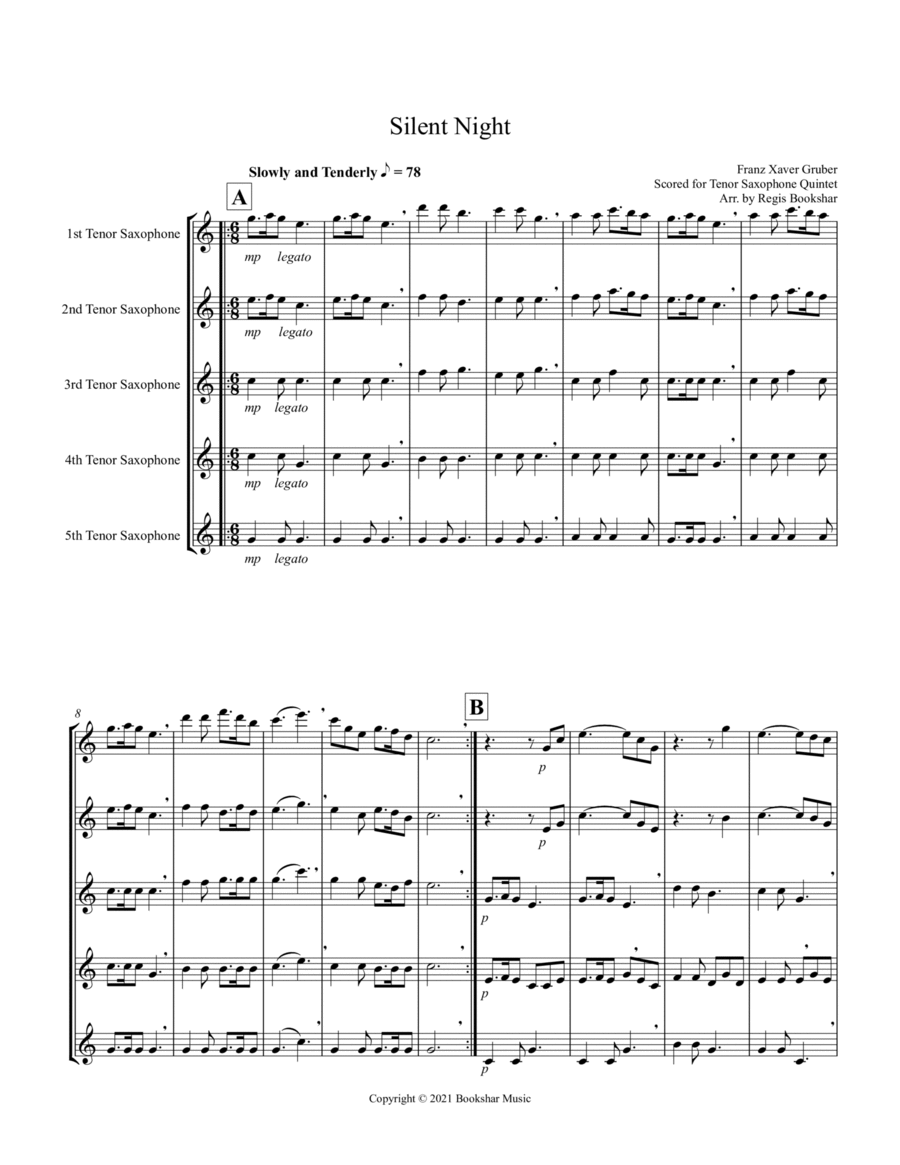

 Silent Night (Bb) (Tenor Saxophone Quintet) #Quintette de Saxophone: 5 saxophones #INTERMÉDIAIRE #Noël #the 1840's, the song was well #Franz Xaver Gruber #Regis Bookshar #Silent Night #Regis Bookshar #SheetMusicPlus
Silent Night (Bb) (Tenor Saxophone Quintet) #Quintette de Saxophone: 5 saxophones #INTERMÉDIAIRE #Noël #the 1840's, the song was well #Franz Xaver Gruber #Regis Bookshar #Silent Night #Regis Bookshar #SheetMusicPlus
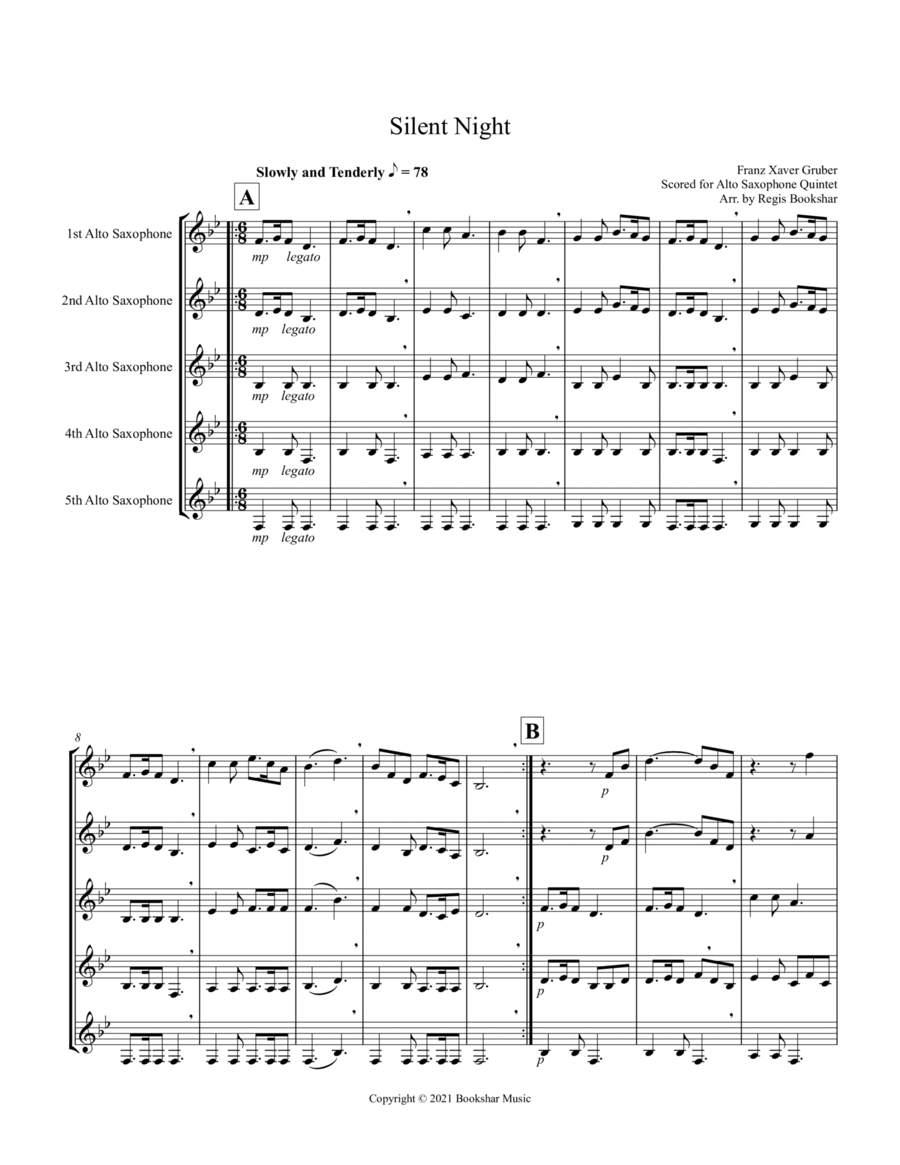

 Silent Night (Bb) (Alto Saxophone Quintet) #Quintette de Saxophone: 5 saxophones #INTERMÉDIAIRE #Noël #the 1840's, the song was well #Franz Xaver Gruber #Regis Bookshar #Silent Night #Regis Bookshar #SheetMusicPlus
Silent Night (Bb) (Alto Saxophone Quintet) #Quintette de Saxophone: 5 saxophones #INTERMÉDIAIRE #Noël #the 1840's, the song was well #Franz Xaver Gruber #Regis Bookshar #Silent Night #Regis Bookshar #SheetMusicPlus


 Silent Night (Bb) (Saxophone Quintet - 2 Alto, 2 Tenor, 1 Bari) #Quintette de Saxophone: 5 saxophones #INTERMÉDIAIRE #Noël #the 1840's, the song was well #Franz Xaver Gruber #Regis Bookshar #Silent Night #Regis Bookshar #SheetMusicPlus
Silent Night (Bb) (Saxophone Quintet - 2 Alto, 2 Tenor, 1 Bari) #Quintette de Saxophone: 5 saxophones #INTERMÉDIAIRE #Noël #the 1840's, the song was well #Franz Xaver Gruber #Regis Bookshar #Silent Night #Regis Bookshar #SheetMusicPlus


 Coronation March (Db) (Saxophone Quintet - 3 Altos, 2 Tenors) #Quintette de Saxophone: 5 saxophones #INTERMÉDIAIRE/AVANCÉ #Classique #Peter Ilyich Tchaikovsky #Regis Bookshar #Coronation March #Regis Bookshar #SheetMusicPlus
Coronation March (Db) (Saxophone Quintet - 3 Altos, 2 Tenors) #Quintette de Saxophone: 5 saxophones #INTERMÉDIAIRE/AVANCÉ #Classique #Peter Ilyich Tchaikovsky #Regis Bookshar #Coronation March #Regis Bookshar #SheetMusicPlus

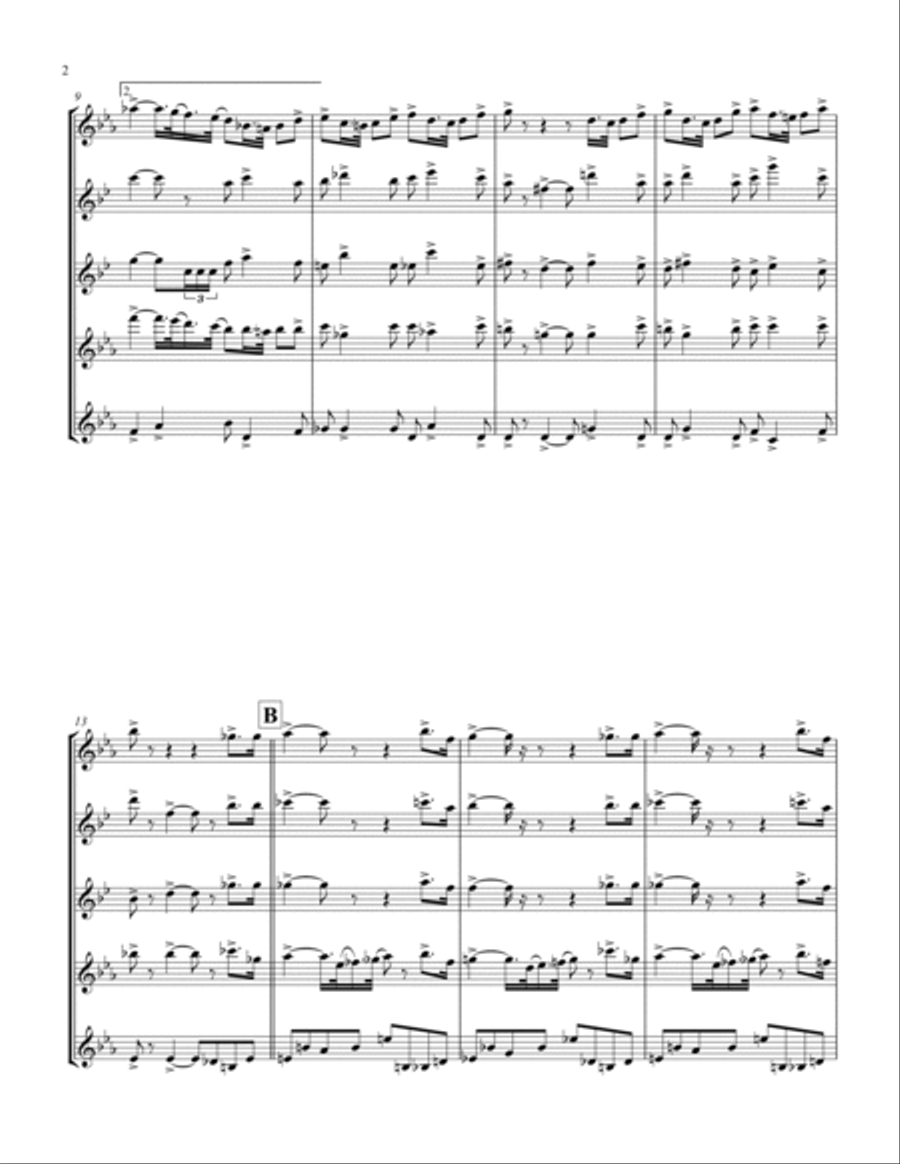
 Coronation March (Db) (Saxophone Quintet - 1 Sop, 2 Altos, 2 Tenors) #Quintette de Saxophone: 5 saxophones #INTERMÉDIAIRE/AVANCÉ #Classique #Peter Ilyich Tchaikovsky #Regis Bookshar #Coronation March #Regis Bookshar #SheetMusicPlus
Coronation March (Db) (Saxophone Quintet - 1 Sop, 2 Altos, 2 Tenors) #Quintette de Saxophone: 5 saxophones #INTERMÉDIAIRE/AVANCÉ #Classique #Peter Ilyich Tchaikovsky #Regis Bookshar #Coronation March #Regis Bookshar #SheetMusicPlus
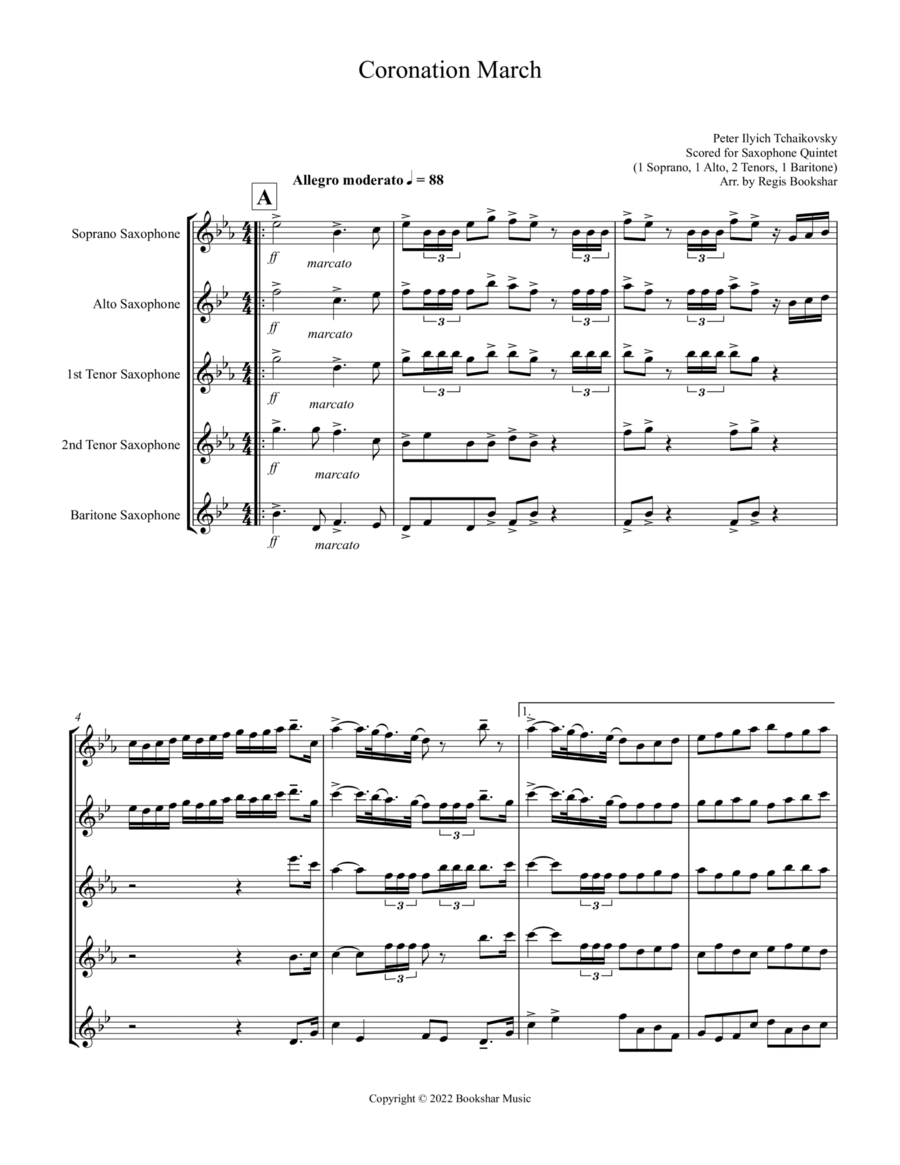

 Coronation March (Db) (Saxophone Quintet - 1 Sop, 1 Alto, 2 Tenors, 1 Bari) #Quintette de Saxophone: 5 saxophones #INTERMÉDIAIRE/AVANCÉ #Classique #Peter Ilyich Tchaikovsky #Regis Bookshar #Coronation March #Regis Bookshar #SheetMusicPlus
Coronation March (Db) (Saxophone Quintet - 1 Sop, 1 Alto, 2 Tenors, 1 Bari) #Quintette de Saxophone: 5 saxophones #INTERMÉDIAIRE/AVANCÉ #Classique #Peter Ilyich Tchaikovsky #Regis Bookshar #Coronation March #Regis Bookshar #SheetMusicPlus


 Coronation March (Db) (Saxophone Quintet - 1 Sop, 2 Altos, 1 Tenor, 1 Bari) #Quintette de Saxophone: 5 saxophones #INTERMÉDIAIRE/AVANCÉ #Classique #Peter Ilyich Tchaikovsky #Regis Bookshar #Coronation March #Regis Bookshar #SheetMusicPlus
Coronation March (Db) (Saxophone Quintet - 1 Sop, 2 Altos, 1 Tenor, 1 Bari) #Quintette de Saxophone: 5 saxophones #INTERMÉDIAIRE/AVANCÉ #Classique #Peter Ilyich Tchaikovsky #Regis Bookshar #Coronation March #Regis Bookshar #SheetMusicPlus


 Coronation March (Db) (Saxophone Quintet - 3 Altos, 1 Tenor, 1 Bari) #Quintette de Saxophone: 5 saxophones #INTERMÉDIAIRE/AVANCÉ #Classique #Peter Ilyich Tchaikovsky #Regis Bookshar #Coronation March #Regis Bookshar #SheetMusicPlus
Coronation March (Db) (Saxophone Quintet - 3 Altos, 1 Tenor, 1 Bari) #Quintette de Saxophone: 5 saxophones #INTERMÉDIAIRE/AVANCÉ #Classique #Peter Ilyich Tchaikovsky #Regis Bookshar #Coronation March #Regis Bookshar #SheetMusicPlus
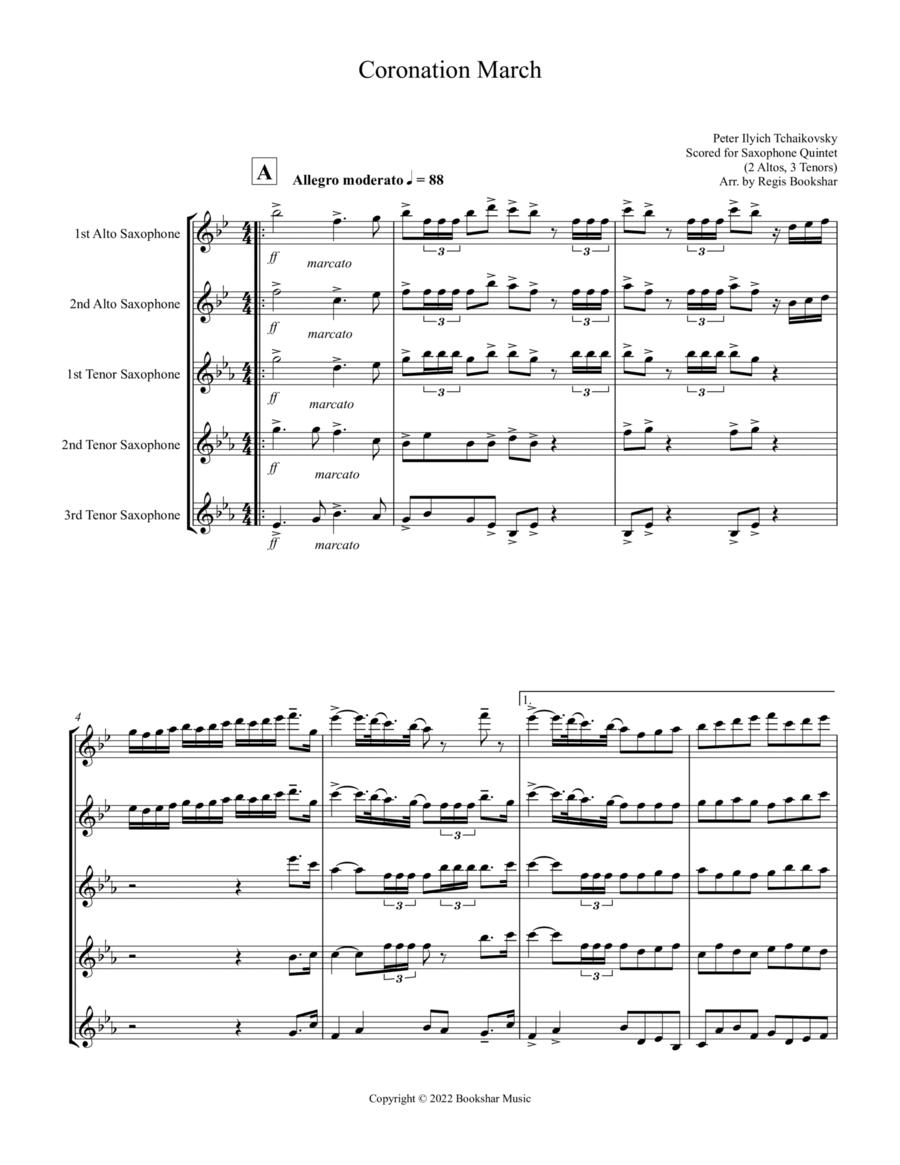
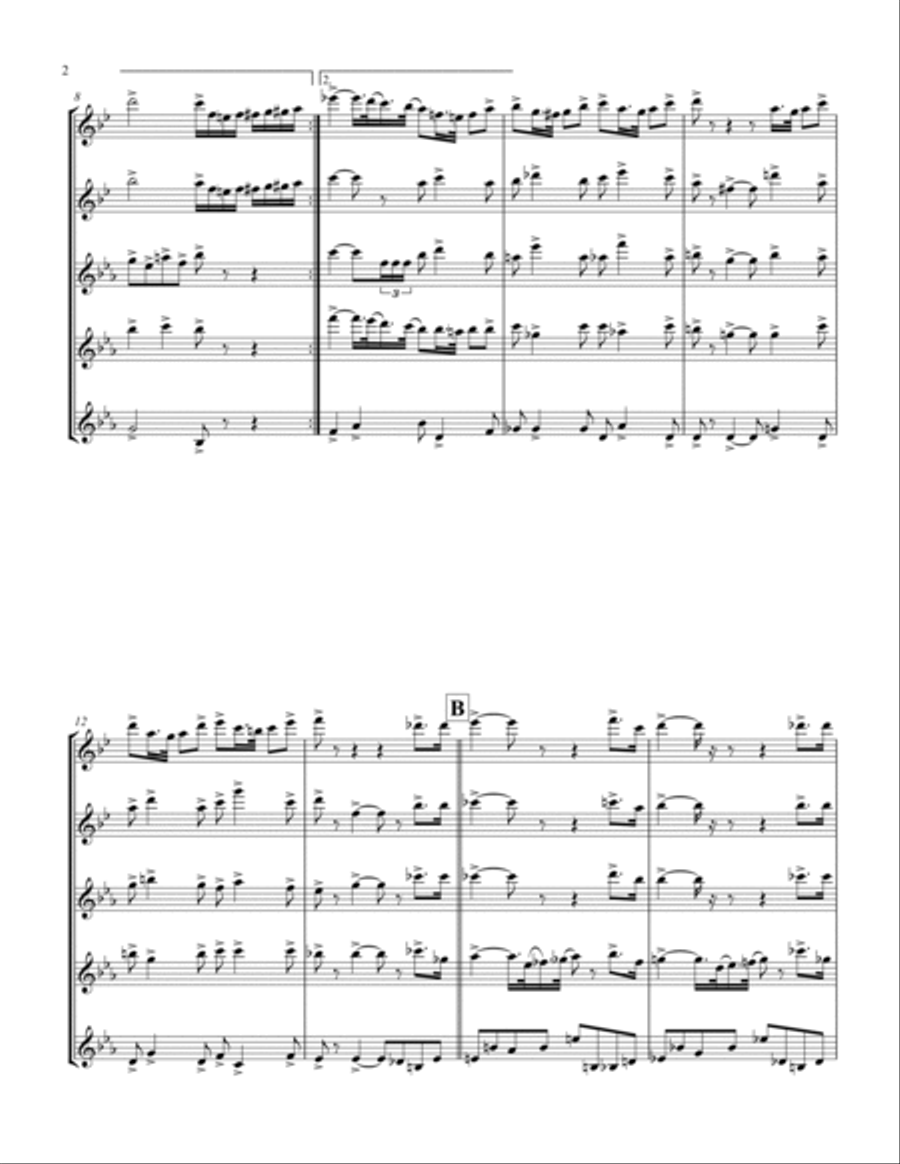
 Coronation March (Db) (Saxophone Quintet - 2 Altos, 3 Tenors) #Quintette de Saxophone: 5 saxophones #INTERMÉDIAIRE/AVANCÉ #Classique #Peter Ilyich Tchaikovsky #Regis Bookshar #Coronation March #Regis Bookshar #SheetMusicPlus
Coronation March (Db) (Saxophone Quintet - 2 Altos, 3 Tenors) #Quintette de Saxophone: 5 saxophones #INTERMÉDIAIRE/AVANCÉ #Classique #Peter Ilyich Tchaikovsky #Regis Bookshar #Coronation March #Regis Bookshar #SheetMusicPlus


 Coronation March (Db) (Tenor Saxophone Quintet) #Quintette de Saxophone: 5 saxophones #INTERMÉDIAIRE/AVANCÉ #Classique #Peter Ilyich Tchaikovsky #Regis Bookshar #Coronation March #Regis Bookshar #SheetMusicPlus
Coronation March (Db) (Tenor Saxophone Quintet) #Quintette de Saxophone: 5 saxophones #INTERMÉDIAIRE/AVANCÉ #Classique #Peter Ilyich Tchaikovsky #Regis Bookshar #Coronation March #Regis Bookshar #SheetMusicPlus


 Coronation March (Db) (Saxophone Quintet - 2 Altos, 2 Tenors, 1 Bari) #Quintette de Saxophone: 5 saxophones #INTERMÉDIAIRE/AVANCÉ #Classique #Peter Ilyich Tchaikovsky #Regis Bookshar #Coronation March #Regis Bookshar #SheetMusicPlus
Coronation March (Db) (Saxophone Quintet - 2 Altos, 2 Tenors, 1 Bari) #Quintette de Saxophone: 5 saxophones #INTERMÉDIAIRE/AVANCÉ #Classique #Peter Ilyich Tchaikovsky #Regis Bookshar #Coronation March #Regis Bookshar #SheetMusicPlus
Largo (from "Symphony No. 9") ("From the New World") (Db) (Saxophone Quintet - 2 Alto, 2 Tenor, 1 Ba



Saxophone Quintet,Woodwind Ensemble Alto Saxophone,Baritone Saxophone,Tenor Saxophone - Level 3 - SKU: A0.813832 Composed by Antonin Dvorak. Arranged by...(+)
Largo (from "Symphony No. 9") ("From the New World") (Db) (Tenor Saxophone Quintet)



Saxophone Quintet,Woodwind Ensemble Tenor Saxophone - Level 3 - SKU: A0.813836 Composed by Antonin Dvorak. Arranged by Regis Bookshar. Contemporary,Folk...(+)
Largo (from "Symphony No. 9") ("From the New World") (Db) (Alto Saxophone Quintet)



Saxophone Quintet,Woodwind Ensemble Alto Saxophone - Level 3 - SKU: A0.813820 Composed by Antonin Dvorak. Arranged by Regis Bookshar. Contemporary,Folk,...(+)
Silent Night (Bb) (Saxophone Quintet - 2 Alto, 3 Tenor)



Saxophone Quintet,Woodwind Ensemble Alto Saxophone,Tenor Saxophone - Level 3 - SKU: A0.813971 Composed by Franz Xaver Gruber. Arranged by Regis Bookshar...(+)
Silent Night (Bb) (Tenor Saxophone Quintet)



Saxophone Quintet,Woodwind Ensemble Tenor Saxophone - Level 3 - SKU: A0.813973 Composed by Franz Xaver Gruber. Arranged by Regis Bookshar. Christmas,Ins...(+)
Silent Night (Bb) (Alto Saxophone Quintet)



Saxophone Quintet,Woodwind Ensemble Alto Saxophone - Level 3 - SKU: A0.813959 Composed by Franz Xaver Gruber. Arranged by Regis Bookshar. Christmas,Inst...(+)
Silent Night (Bb) (Saxophone Quintet - 2 Alto, 2 Tenor, 1 Bari)



Saxophone Quintet,Woodwind Ensemble Alto Saxophone,Baritone Saxophone,Tenor Saxophone - Level 3 - SKU: A0.813969 Composed by Franz Xaver Gruber. Arrange...(+)
Coronation March (Db) (Saxophone Quintet - 3 Altos, 2 Tenors)



Saxophone Quintet,Woodwind Ensemble Alto Saxophone,Tenor Saxophone - Level 4 - SKU: A0.1083834 Composed by Peter Ilyich Tchaikovsky. Arranged by Regis B...(+)
Coronation March (Db) (Saxophone Quintet - 1 Sop, 2 Altos, 2 Tenors)



Saxophone Quintet,Woodwind Ensemble Alto Saxophone,Soprano Saxophone,Tenor Saxophone - Level 4 - SKU: A0.1083811 Composed by Peter Ilyich Tchaikovsky. A...(+)
Coronation March (Db) (Saxophone Quintet - 1 Sop, 1 Alto, 2 Tenors, 1 Bari)



Saxophone Quintet,Woodwind Ensemble Alto Saxophone,Baritone Saxophone,Soprano Saxophone,Tenor Saxophone - Level 4 - SKU: A0.1083738 Composed by Peter Il...(+)
Coronation March (Db) (Saxophone Quintet - 1 Sop, 2 Altos, 1 Tenor, 1 Bari)



Saxophone Quintet,Woodwind Ensemble Alto Saxophone,Baritone Saxophone,Soprano Saxophone,Tenor Saxophone - Level 4 - SKU: A0.1083740 Composed by Peter Il...(+)
Coronation March (Db) (Saxophone Quintet - 3 Altos, 1 Tenor, 1 Bari)



Saxophone Quintet,Woodwind Ensemble Alto Saxophone,Baritone Saxophone,Tenor Saxophone - Level 4 - SKU: A0.1083833 Composed by Peter Ilyich Tchaikovsky. ...(+)
Coronation March (Db) (Saxophone Quintet - 2 Altos, 3 Tenors)



Saxophone Quintet,Woodwind Ensemble Alto Saxophone,Tenor Saxophone - Level 4 - SKU: A0.1083825 Composed by Peter Ilyich Tchaikovsky. Arranged by Regis B...(+)
Coronation March (Db) (Tenor Saxophone Quintet)



Saxophone Quintet,Woodwind Ensemble Tenor Saxophone - Level 4 - SKU: A0.1083848 Composed by Peter Ilyich Tchaikovsky. Arranged by Regis Bookshar. Classi...(+)
Coronation March (Db) (Saxophone Quintet - 2 Altos, 2 Tenors, 1 Bari)



Saxophone Quintet,Woodwind Ensemble Alto Saxophone,Baritone Saxophone,Tenor Saxophone - Level 4 - SKU: A0.1083817 Composed by Peter Ilyich Tchaikovsky. ...(+)







